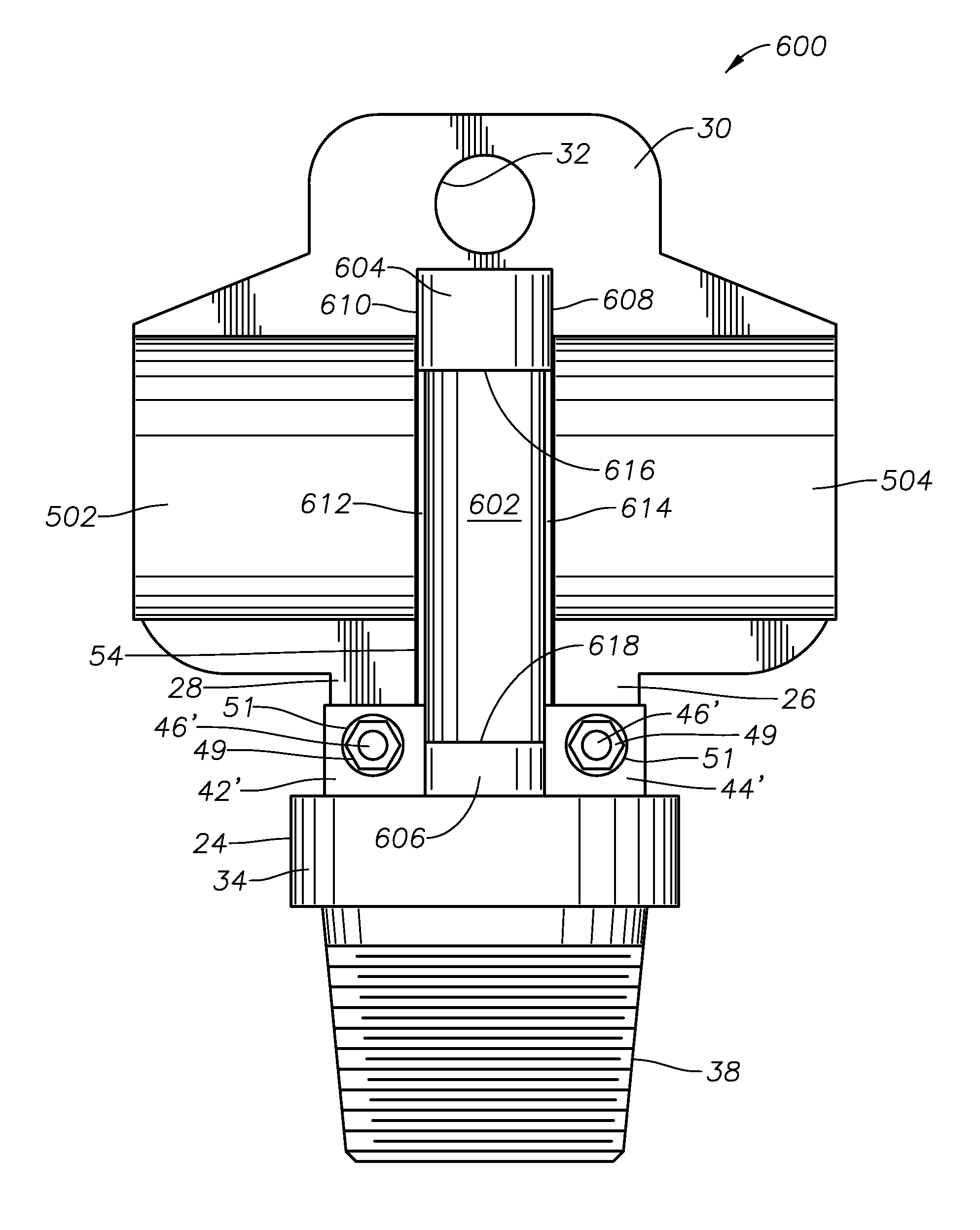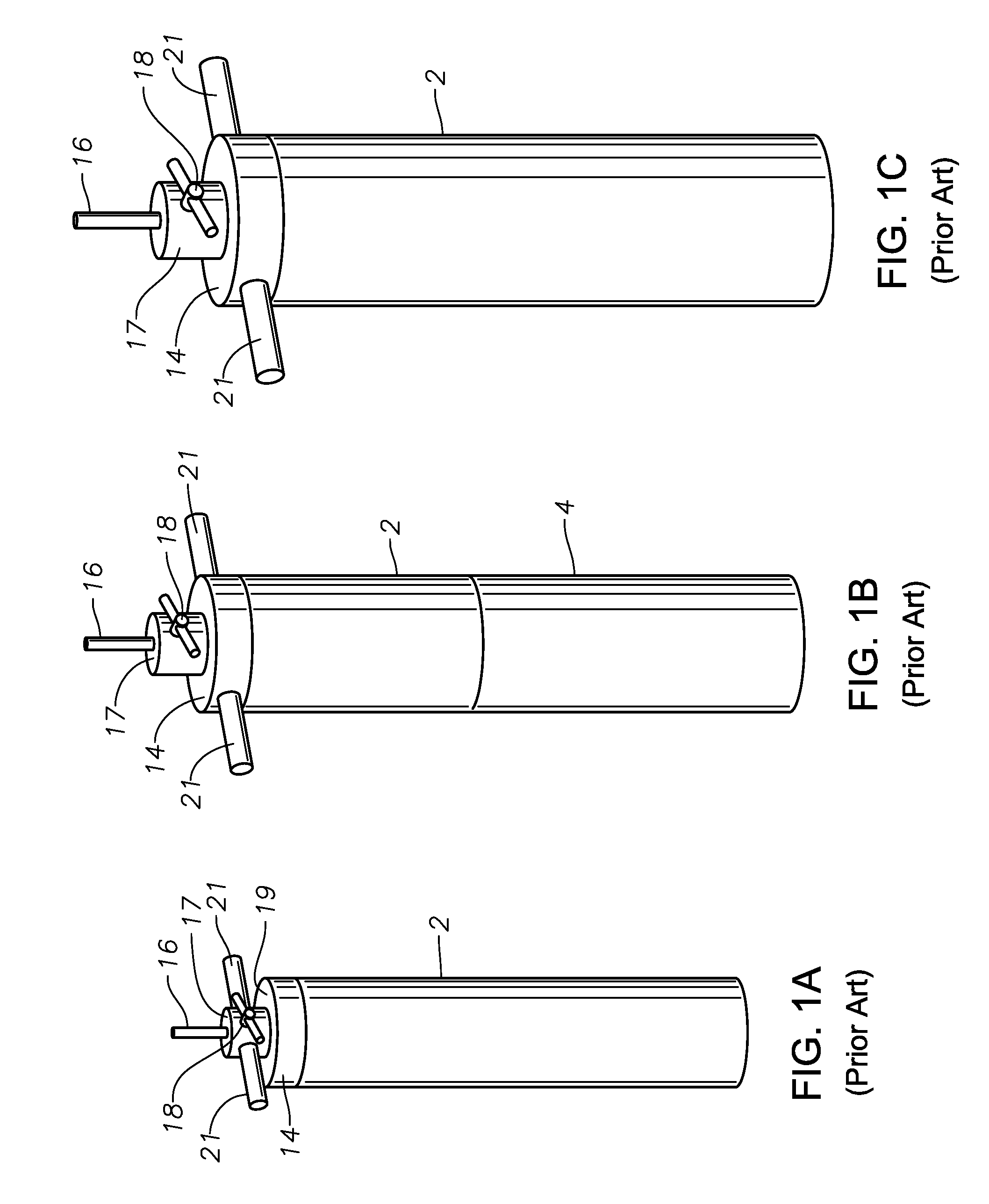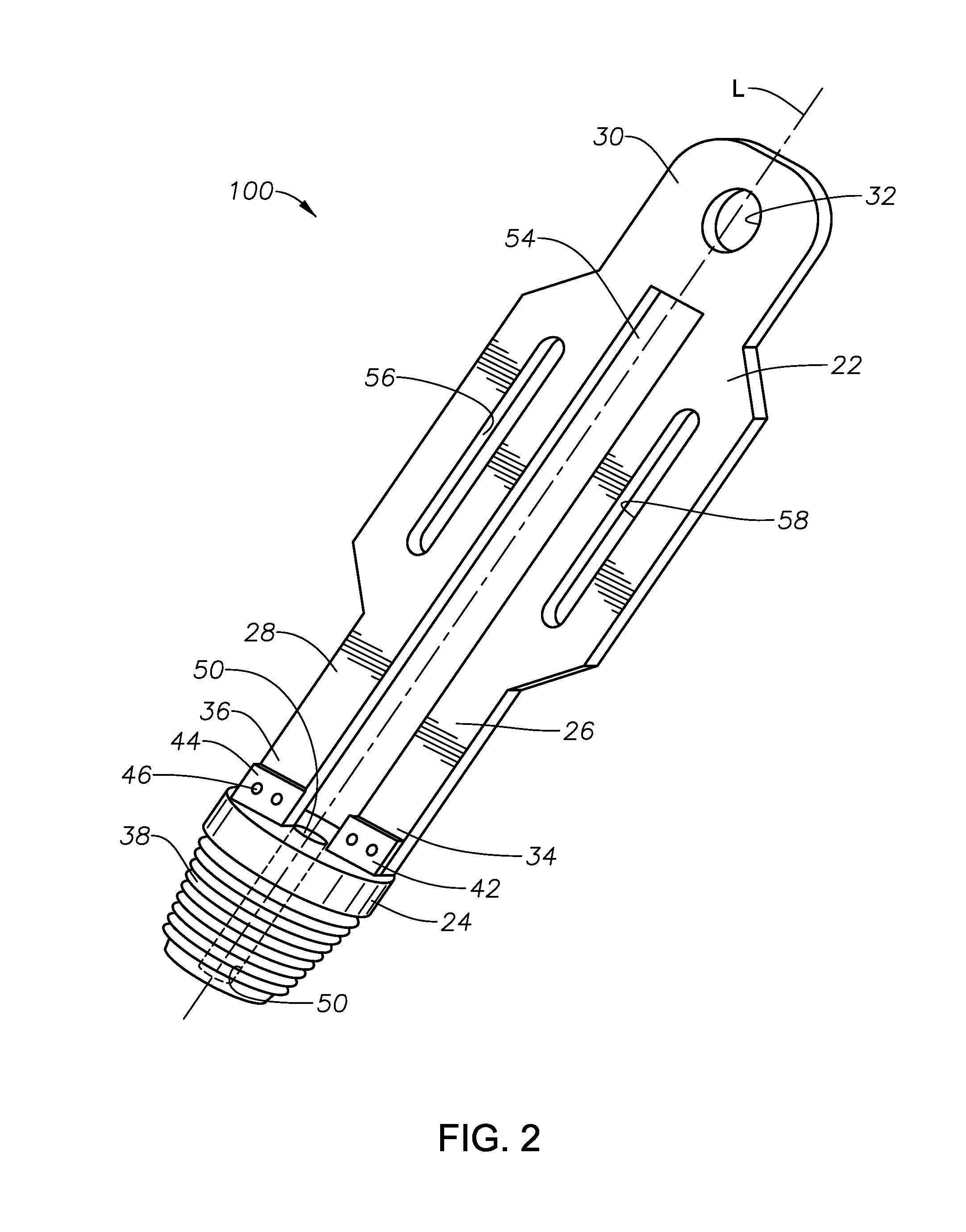Oilfield lift cap and combination tools
a technology of oilfield lifts and combination tools, which is applied in the direction of drilling casings, drilling pipes, load-engaging elements, etc., can solve the problems of rig workers having the difficult task of not being able to make up tiws or kellys, rig workers have the potential to injure rig workers, etc., and achieve the effect of quick and easy disassembly
- Summary
- Abstract
- Description
- Claims
- Application Information
AI Technical Summary
Benefits of technology
Problems solved by technology
Method used
Image
Examples
embodiment 100
[0049]With these problems in mind, the modular tools of the present disclosure were developed. FIG. 2 is a schematic perspective view of one modular tool body embodiment 100 within the present disclosure. Modular tool body 100 includes an upper “flat iron” section 22 having a longitudinal axis “L”, and a lower tubular section 24 of same longitudinal axis. Upper section 22 is comprised of two longitudinal members 26, 28, joined by a top manipulating end 30. Upper section 22 is a one-piece, formed, planar, metallic component with no welds or components welded thereto. This eliminates the need for pull testing (tensile testing) in offshore applications. Longitudinal members 26, 28 define a central open region 54 there between, each longitudinal member having a lower end 34, 36, respectively. Top manipulating end 30 includes one or more lifting features 32 formed therein configured to accept one or more manipulator cables, chains, or straps (not illustrated), the one or more milled lift...
embodiment 350
[0059]FIGS. 6 and 7 are schematic perspective views of another modular tool embodiment in accordance with the present disclosure, and side elevation views (partially in cross-section) of valves that may be picked up and stabbed using the modular tools of this disclosure. Embodiment 350 illustrated schematically in FIG. 6 actually is four embodiments of combinations of the modular tool formed by upper section 400 and lower section 24 combined with four different ball valves useful as kelly valves, safety valves, or top drive valves. For example, the kelly valve illustrated schematically at 320 is the kelly valve known under the trade designation ONE-PIECE CANISTER GUARD™ kelly valve; the kelly valve illustrated schematically at 330 is the kelly valve known under the trade designation TWO-PIECE CANISTER GUARD™ kelly valve; the safety valve illustrated schematically at 336 is the safety valve known under the trade designation TWO-PIECE CANISTER GUARD™ safety valve; and the valve illust...
embodiment 380
[0060]Embodiment 380 illustrated schematically in FIG. 7 actually is four embodiments of combinations of the modular tool formed by upper section 400 and lower section 24 combined with four different ball valves useful as kelly valves, safety valves, or top drive valves. For example, the top drive valve illustrated schematically at 340 is the top drive valve known under the trade designation TOP DRIVE BOTTOM LOAD™ SYSTEM, and the safety and kelly valve illustrated schematically at 345 is an old standard construction safety and kelly valve, both available from M & M International, Broussard, La., USA. The ball valve illustrated schematically at 355 in FIG. 7 is a schematic illustration of an API Class I ball type kelly valve, while the ball valve illustrated schematically at 360 in FIG. 7 is a schematic illustration of an API Class II ball type kelly valve, both available from TIW Corporation, Houston, Tex., USA. The construction and operation of these valves is well known and forms ...
PUM
 Login to View More
Login to View More Abstract
Description
Claims
Application Information
 Login to View More
Login to View More - R&D
- Intellectual Property
- Life Sciences
- Materials
- Tech Scout
- Unparalleled Data Quality
- Higher Quality Content
- 60% Fewer Hallucinations
Browse by: Latest US Patents, China's latest patents, Technical Efficacy Thesaurus, Application Domain, Technology Topic, Popular Technical Reports.
© 2025 PatSnap. All rights reserved.Legal|Privacy policy|Modern Slavery Act Transparency Statement|Sitemap|About US| Contact US: help@patsnap.com



